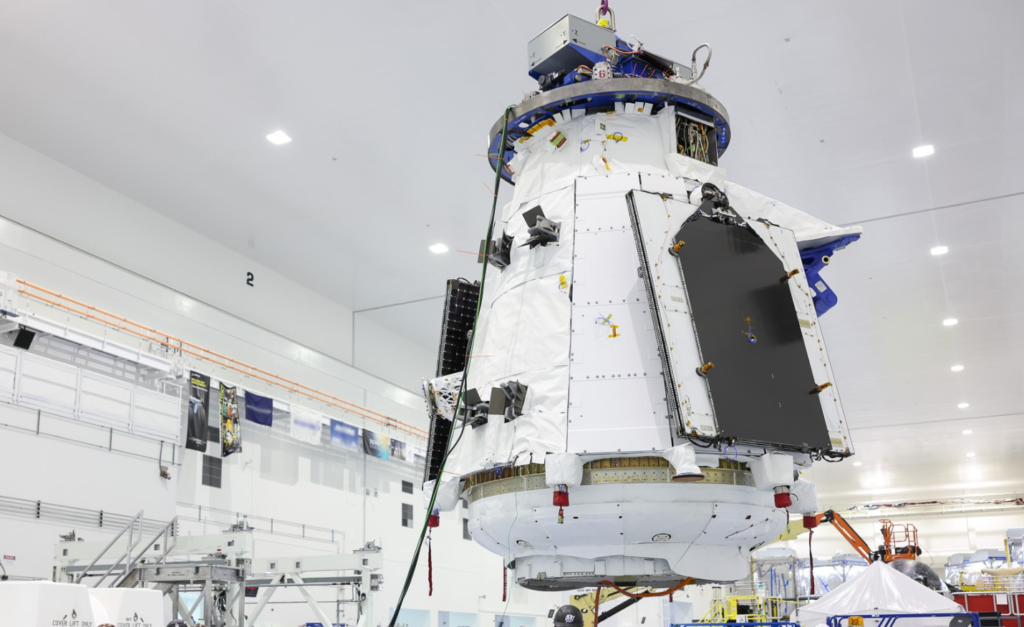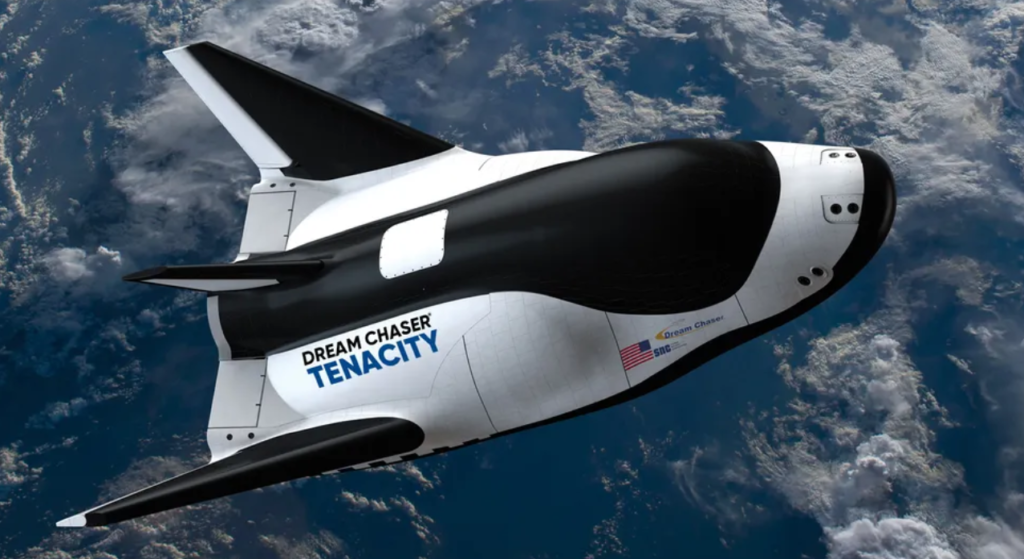After months of initial shock, vibration, thermal vacuum, and other forms of testing, Dream Chaser Tenacity, the first test article set to launch, has officially moved on to its final steps. In an official statement from Sierra Space, they outlined some of the upcoming plans involving even more testing, finishing the heat shield, and eventually integrating the vehicle with Vulcan.
While some of the initial delays pushed this maiden flight back, missing its first ride on Vulcan, it still is not far away from another launch opportunity. Here I will go more in-depth into the exact vehicle progress, heat shield completion, the upcoming launch schedule, and more.
The Road to Launch

With this being the first-ever mission of a brand new spacecraft, Sierra Space along with NASA are taking their time when it comes to final testing and mission prep. Earlier this month the company announced that final testing and launch preparations for both the Dream Chaser Spaceplane and Shooting Star cargo module have commenced at NASA’s Kennedy Space Center in Florida ahead of the company’s inaugural mission to resupply the International Space Station (ISS).
In reality, the vehicles arrived around May however they are just now starting some of the final procedures. Specifically, in a statement the company said that the vehicles, “are now being readied for final assembly, testing and pre-launch processing inside the historic Space Systems Processing Facility (SSPF), the staging center for all components of the International Space Station. Sierra Space and NASA teams have spent the last several weeks preparing for the work ahead, which includes final environmental testing, closeout checks on propulsion and electrical systems, the application of remaining thermal protection tiles, and pre-launch processing for Dream Chaser’s rocket ride to space” they said.
With these steps now complete, Sierra Space describes the final 3 primary areas that require testing and work before launch. The first is the final assembly and system checks. Even now there are still some heat shield tiles across the spacecraft’s body that haven’t been installed thanks to the previous months of testing. Obviously there can’t be a single missing tile so any spot that isn’t covered will be in the near future. The system checks mainly have to do with the propulsion system closeout and leak testing.
The second primary area is even more environmental testing. Even with months of this testing already under Tenacity’s belt, it can expect a few more. They clarified that the “Upcoming tests include Electromagnetic Interference (EMI) and Electromagnetic Compatibility (EMC) testing, ensuring that all electrical components function seamlessly in space’s challenging radio frequency (RF) environment. Additionally, acoustic testing will verify that both Dream Chaser and Shooting Star can withstand the intense noise levels experienced during launch.”
If that wasn’t enough, with Tenacity expected to return after completing the mission, they need to complete landing-related tests as well. Here, runway testing will verify Dream Chaser’s differential braking system upon returning from space and landing at Space Florida’s storied Launch and Landing Facility (LLF) onsite at Kennedy.
Once complete, Sierra Space will move on to the final of the 3 pre-launch categories, with the last being pre-launch processing. The final stage involves getting the spacecraft ready for encapsulation in the rocket fairing and integration with the ULA Vulcan Centaur’s systems. Still, the Vulcan is set as Dream Chaser’s launch vehicle and will be for the foreseeable future.
Fortunately for Tenacity, it seems that the general production of ULA’s Vulcan rockets is going smoothly. A few months ago for example the CEO Tory Bruno mentioned that they had already received all the BE-4 engines for Vulcan’s 2024 manifest. Even though at this point it seems like a Tenacity launch in early 2025 is more likely, this is a good sign that whenever the spaceplane is ready, a Vulcan will be as well.
It was supposed to launch on Vulcan’s second mission however a lot of the testing I just mentioned prior still needed to be completed. The main issue with this is that ULA launched without them and now there are a few Vulcan missions taking priority over the rest of the year. While not ideal, it seems like Tenacity itself needs at least a few more months before it’s even ready for integration. That being said, at the same time, it is making progress. Recently on August 15th Sierra Space tweeted saying, “Shooting Star cargo module goes vertical. The next time it does this will be in preparation for launch.” Something to keep an eye on in the coming weeks.
New Reuse Opportunities

At the same time as final physical testing for Tenacity begins, Sierra Space is also working on adding new capabilities for reuse and refurbishment. Interestingly, in the same statement going over some of the pre-launch procedures, they also announced a new relevant partnership.
Here they were quoted saying, “As regular mission operations near reality, Sierra Space is preparing for ground reprocessing operations of its reusable Dream Chaser spaceplane onsite in Florida to ensure efficient mission turnaround time. To support future missions at Kennedy Space Center from 2026 onwards, Sierra Space is proud to announce a partnership with All Points Logistics for long-term ground processing of the Dream Chaser fleet post-mission. Sierra Space will reap the benefits of All Points’ planned Space Prep facility complex onsite – near the historic LLF runway – immediately following flights from Low Earth Orbit” they said.
In other words, they are working with a company that will help them store, work on, and eventually turn around a recently flown spaceplane into a vehicle ready for another flight. Here, after a Dream Chaser landing, the team will transport it to the future-planned Space Prep facility for inspection, offload, and preparation for subsequent missions. According to All Points, the Space Prep complex will boast approximately 500,000 square feet of state-of-the-art infrastructure, providing seamless support for spacecraft operations from the factory to the launch pad.
If successful, this approach intends to streamline Dream Chaser flight turn-around preparations by consolidating ground infrastructure and operations such as turnkey propellant servicing and de-servicing, pre- and post-mission payload integration and servicing, extensive equipment storage and dedicated control centers in a single complex conveniently located on Kennedy Space Center near the runway and launch pads. Also, the unique Space Prep processing center design features dual processing spaces to eliminate processing chokepoints and advanced technology that avoids facility evacuations during hazardous operations to ensure efficient Dream Chaser flight preparations.
With this new announcement, it’s clear that Sierra Space is very serious about having a reasonable refurbishment time and continually launching flown spaceplanes. They currently have Tenacity and another cargo variant under construction meaning reusability will be key for frequent flights. Also, with a system like Dream Chaser which features thousands of heat shield tiles across its entire body, the goal will be accessing them as quickly as possible, and replacing any compromised tile in a timely manner. This is definitely easier said than done as shown by a few different vehicles within the industry but important nonetheless.
This actually isn’t the first reuse-related partnership that Sierra Space has entered into. Thanks to Dream Chaser’s unique design, it does require an actual runway in order to land. While some of the first landings will be in the United States on NASA’s runways, Sierra Space wants options around the world. All the way back in 2022 they announced the signing of a new Memorandum of Understanding (MOU). The agreement added the world-class New Mexico spaceport to Sierra Space’s portfolio of potential global landing sites for its Dream Chaser.
Spaceport America, located in southern New Mexico, was just one of the most recent addition to a growing list of compatible runways worldwide where the Dream Chaser could land, including the Shuttle Landing Facility (SLF) at NASA’s Kennedy Space Center and airports and landing sites in Huntsville, Alabama, Oita Airport, Japan, and Spaceport Cornwall in the United Kingdom.
This specific MOU outlined the two organizations’ mutual pursuit to increase Spaceport America’s capabilities and demand for Dream Chaser reentry at the spaceport. As a result, in line with their shared vision, both parties pursued a Part 433 reentry site operator’s license for Spaceport America from the Federal Aviation Administration (FAA). Dream Chaser is currently under contract to perform cargo supply and return missions for NASA starting in the near future, delivering up to 8,000 pounds of cargo to the International Space Station (ISS) at a time. These additional landing options could become a great asset down the line.
Originally, Sierra Space was awarded a Commercial Resupply Services 2 (CRS-2) contract by NASA. Under this contract, the Dream Chaser spaceplane fleet (including Tenacity), will provide a minimum of seven uncrewed cargo service missions to and from the International Space Station (ISS). In theory, after this first mission with Teancity, we should start to see the spaceplane flying much more frequently.
In a quote from Sierra Space CEO Tom Vice, he said, “We are on the cusp of achieving a major milestone for Sierra Space and the commercial space industry. The final testing and launch preparations of the first Dream Chaser happening inside such a historic NASA facility underscore the significance of our mission to revolutionize space transportation with an innovative new commercial spaceplane and the world’s first true spaceliner.”
Conclusion
Dream Chaser is now officially on the home stretch as it begins its final testing and even heat shield application. Once complete, it will be integrated with ULA’s Vulcan Centaur before a maiden flight likely sometime around early 2025.
